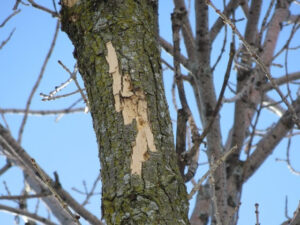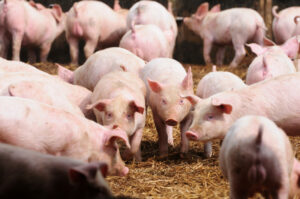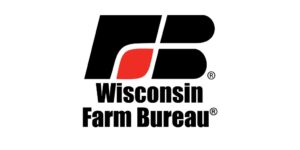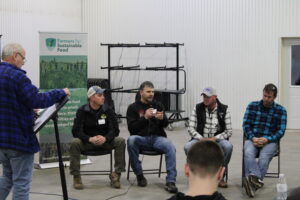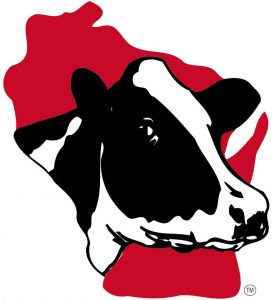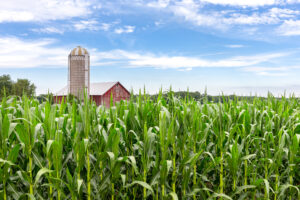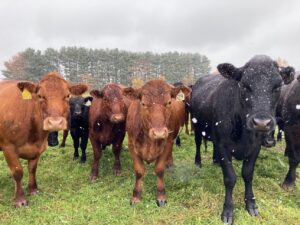Extension Offering Gardening Class
The Dane County Extension Horticulture Program is hosting a Winter Green Thumb Gardening Class. The course is a series of vegetable gardening classes tailored for both home and community gardeners.
These classes provide an immersive and informative experience, covering a diverse range of gardening topics to empower participants with essential skills.
Designed to foster thriving home vegetable gardens, the series spans from seed starting to composting and managing insect pests. Whether you’re a novice or an experienced gardener, these classes offer valuable insights to enhance your gardening journey.
The classes are from 6-8 p.m. on Thursday evenings, starting mid-January through mid-March.
Conveniently hosted via Zoom, sessions will be recorded for participants’ reference. Registrants have the option to enroll in the entire class series at a discounted rate or choose specific classes based on their interests.
Learn more and register: https://dane.extension.wisc.edu/horticulture/winter-2024-green-thumb-gardening-series-online/
Watch For Signs Of Emerald Ash Borer
Photo credit: Wisconsin DNR
Watch for woodpecker damage to your ash trees this winter. The Wisconsin DNR says if you find damage, you should make plans to take action this spring.
Woodpecker damage, often called “flecking,” happens when birds peck away some of a tree’s bark to access the larvae underneath. Flecking is a common early sign that an ash tree has emerald ash borer, an invasive insect. EAB is the most damaging threat to Wisconsin trees, killing more than 99 percent of the untreated ash trees it infests.
In 2023, three additional Northern counties in Wisconsin found emerald ash borer. The insect is now present in 69 of Wisconsin’s 72 counties. It is a common insect in the southern half of the state and woodpecker damage to ash trees is already widespread. EAB infestations are currently uncommon in most parts of northern Wisconsin, and woodpecker damage will be less abundant.
Landowners who spot woodpecker damage in their woodlot ash trees should consult a DNR or consulting forester for management advice.
Property owners who detect an emerald ash borer infestation in its early stages — often by looking for woodpecker damage — can take steps to protect their high-value ash trees by treating them with insecticide between mid-April and mid-May. Insecticide treatments are seldom practical or economical for woodlot ash trees.
Insecticide treatment of valuable ash trees is more likely to succeed if the trees have low or moderate levels of woodpecker damage. Now is a good time to make plans for insecticide protection this spring.
Learn more: https://datcpservices.wisconsin.gov/eab/index.jsp
Flecking usually starts in a tree’s canopy and progresses down the tree over the next few years if the tree is not treated. Other signs and symptoms of emerald ash borer infestation include:
- Sprouts growing from the base or trunk of the tree.
- A thinning canopy with smaller, pale leaves.
- Small (one-eighth of an inch), D-shaped exit holes in the bark.
- Green beetles crawling on the trunk of ash trees during the summer.
U.S. On Track For Record Pork Exports To Mexico
With one month of data still to be reported, U.S. pork exports to Mexico have already set an annual record for 2023. January-November exports to Mexico totaled more than 995,000 metric tons. That’s up 13 percent year-over-year, while value was 15 percent higher at $2.12 billion.
Mexico has long been a large destination for pork cuts such as bone-in hams and picnics. But U.S. pork loin is an emerging star in the market. With support from the National Pork Board and USDA’s Market Access Program and Quality Samples Program, the U.S. Meat Export Federation conducted a host of promotions in Mexico showcasing the loin.
These promotions have included mobile workshops using a U.S. Pork truck, says Lorenzo Elizalde, USMEF’s director of marketing and trade in Mexico.
“The U.S. pork truck has made a tremendous contribution to promote pork loin,” Elizalde says. “This year we have conducted around 150 samplings and tasting activities and over 50 activities involve recipes using pork loin.”
USMEF conducted these activities in 25 cities with 18 commercial partners. At the beginning of this year USMEF implemented the Pork Loin Quality Sample Program with a commercial partner located in Monterrey – CediCarnes.
Elizalde says new consumer products, including smoked pork loin and a chopped loin product used in tacos, have been important. These items found success in Walmart and City Club stores in Mexico, with USMEF conducting on-site tasting demonstrations using the U.S. Pork truck.
“New product development has been very important,” Elizalde says. “We believe that if we want to increase demand for pork loin, we need to develop new products.”
Hog Market Struggles To Find Upward Momentum
Jeff Swenson, DATCP livestock and meat specialist, prepared and wrote the following market update. It draws information from several sources, including trade publications, radio broadcasts, agricultural news services, individuals involved in the industry as well as USDA reports. Edited by Mid-West Farm Report.
The hog market continues its struggle to find upward momentum. There has been little news or change in market trends to shift the trajectory.
Cash hogs were 25¢/cwt lower last week. The pork cutout value showed moderate strength last week, gaining $1.15 to average $84.15. Belly prices jumped higher this week.
The USDA estimated a hog harvest of 2.381 million last week. That was 160,000 more than the previous week and 35,000 more than the same week last year. Winter weather hampered hog movement this week with a Tuesday harvest 98,000 less than the previous week.
International pork supply and demand could become an even larger story in 2024. There are reports that November hog harvest totals in China were 40 percent higher than November 2022. It is unclear if the large liquidation is due to African Swine Fever or because of economic factors. The economy there continues to struggle, and pork consumption is down.
Hog prices in the EU are near record levels as heavy culling continues. The conditions in the EU have helped U.S. pork exports, although part of the demand for U.S. pork is due to lower prices here.
Wisconsin Farm Bureau Introduces New Member Benefits
Wisconsin Farm Bureau is excited to announce new agreements with KEY Apparel and the Food Finance Institute to offer two additional, exclusive member benefits.
“Wisconsin Farm Bureau continues to grow an already strong line up of money-saving member benefits,” said WFBF President Brad Olson. “We are excited to unveil two new agreements that will add even more value to Farm Bureau memberships.”
KEY Apparel Discount
With 110 years of experience in the workwear clothing industry, KEY Apparel provides reliable workwear for rugged use and office-wear at the best value.
WFBF members can now save up to 20% on online purchases with free shipping on orders over $75. Members also have access to the KEY Business Design Lab to add Farm Bureau logos or create custom-branded KEY apparel for your farm or business.
Food Finance Institute
New changes in the food industry are rapidly increasing expectations for all food and value-added farm enterprises. Old or young, big or small, businesses are scrambling to become more financially resilient and capable of adapting quickly.The Food Finance Institute helps food and farm businesses raise the money they need to grow through valuable training opportunities.
WFBF members can now save 20% on Food Finance Institute’s Farm Management Boot Camp, Scenario Planning and Raising Equity trainings.
For more information about these benefits or to learn more about other discounts and incentives, visit wfbf.com/membership/member-benefits.
Western Wisconsin Conservation Council shares Research
Farmers in western Wisconsin continue their collaborative efforts in building more sustainable farms. The Western Wisconsin Conservation Council held its annual meeting on Dec. 14, highlighting the significant strides made by its member farmers in developing and also implementing sustainable agricultural practices.
The meeting opened with a review of the WWCC’s 2023 achievements, presented by President Todd Doornink. This demonstrated the group’s commitment to environmental stewardship and also community engagement.
 |
“2023 has been an interesting year,” Doornink said. “We’re up to 63 members now. We’re entering the sixth year of our member conservation surveys and fifth year of our cost-share program.”
Keynote speakers, including Shawn Wesener from Farmers for Sustainable Food, shared insights from the 2023 Member Conservation Practice Survey. Wesener noted the high number of member responses to this year’s survey.
“Of the 61 members, 59 responded to the survey,” Wesener said. “With a 97% response rate, this is some of the best data I have ever seen.”
The meeting also featured updates from Dr. Jill Coleman Wasik on critical programs such as the Well Testing Lysimeter and the DATCP Nitrogen Optimization Pilot Project, highlighting the collaborative efforts of WWCC members in optimizing resource usage and minimizing environmental impacts. Wasik noted the positive results already being seen just three years into the study.
“A lot of wells are showing declines [in nitrate levels] after just three years,” Dr. Coleman Wasik said. “Maybe this issue won’t take as long to correct as we initially thought.”
Dave Tollberg, a WWCC member, also added some perspective on Dr. Coleman Wasik’s presentation, noting farm-level impacts of profitability with some of the research being done.
Spencer Anderson, from 715Ag Supply LLC, provided soil health outcomes from the Haney soil health test the group cost-shared with The Nature Conservancy of Wisconsin. A Haney test measures the soil’s condition and balance though many metrics. This process can help farmers determine any necessary changes for their fields’ nutrient levels.
 |
The program finished with a farmer panel moderated by Dave Tollberg and featured local farmers Todd Doornink, Greg Friendshuh, Skipp Grosskreutz and Scott Carlson. Each farmer shared personal experiences and lessons learned in 2023. All four use cover crops with success and relatively few challenges, though all reiterated the need for proper management, including timing of termination.
“We started using cover crops to help combat erosion,” Doornink said. “Since then, we’ve actually started using them for more crops.”
Carlson said they believe in the practices they are implementing on their farm.
“I don’t know if it pays for itself, but it sure looks like the right thing to do,” Carlson said.
The WWCC closed the meeting with remarks from Doornink, including recognition of Jeff Lueck for his time of service on the board, and the election of the new board for 2024. Doornink and Larry Knutson were re-elected, and Kevin Solum was newly elected to the board. Doornink was also re-elected president, Greg Friendshuh vice president, Skip Grosskreutz secretary and Tom Zwald will serve as treasurer for 2024. Spencer Anderson, Jerry Emmert and Dave Tollberg will continue their seats on the board.
Wisconsinites Shine in Virtual Interview Contest
Young dairy enthusiasts from coast to coast practiced their professional skills during the 2023 Virtual Interview Contest. The contest helps Junior Holstein members refine their resume writing and interview skills, giving them practical knowledge for future opportunities.
Applicants submitted cover letters and resumes based on a mock interview scenario and were selected to move on to the second phase of the contest based on their combined cover letter and resume scores. During the second phase contestants were interviewed by a panel of three judges. Final scores were calculated based on each applicant’s cover letter, resume, and interview. Every participant receives constructive feedback from the judges to further enhance their interview aptitude.
Junior Division (ages 12-14 as of January 1)
1st place: Alison Gartman, Wisconsin
2nd place: Chloe Chapman, California
3rd place: Sophia Nielsen, Michigan
Intermediate Division (ages 15-17 as of January 1)
1st place: Madison Mowrer, Pennsylvania
2nd place: Elsie Donlick, New York
3rd place: Samuel Mell, Wisconsin
Senior Division (ages 18-21 as of January 1)
1st place: Dale Freier III, New York
2nd place: Clarissa Ulness, Wisconsin
3rd place: Kylie Konyn, Wisconsin
Cash prizes of $250 for first place, $100 for second place, and $50 for third place will be awarded in the junior and intermediate divisions. In the senior division, youth will be given cash prizes of $500 for first place, $250 for second place, and $100 for third place.
NASS: 2023 Growing Season In Review
The National Agricultural Statistics Service reflects on the 2023 growing season.
It began with below normal temperatures and Northern fields still covered with snow. On April 2, 2023, topsoil moisture rated 45 percent surplus compared to 29 percent on April 3, 2022. However, the weather soon warmed, and crop plantings kept on pace with five-year averages.
Days suitable for fieldwork in April and May averaged 3.6 for 2023 compared to 2.9 days in April and May of 2022. On April 23, spring tillage was 13 percent complete, 6 days ahead of 2022 but 3 days behind the 5-year average.
As summer went on, lower than average precipitation led to delayed crop development and worsening conditions. By August 27, the winter wheat harvest was 98 percent complete, equal to the five-year average. The oat harvest was 98 complete on September 17. On November 26, the soybean harvest was 98 percent complete, in line with most of the previous years. Finally, the corn harvest was 85 percent complete on November 26, matching the average. Post-harvest activities such as tillage and manure applications lagged around one week behind the average.
Weather
The average temperature for June through September was 66.5 degrees, compared to 65.6 degrees in 2022 and the normal temperature of 65.3 degrees. April temperatures were only 0.3 degrees above normal, while May and June temperatures climbed to 1.4 and 1.6 degrees above normal. July was the only month below normal temperatures, at 0.7 degrees below normal. August through November were all above normal, with September and October being particularly warm at 3.7 and 2.6 degrees above normal respectively.
Precipitation totaled 17.36 inches from April to September, compared to 21.50 inches last year and the normal of 23.36 inches. April had 0.84 inches above normal precipitation; however, May and June were much lower than normal with 2.32 and 2.82 inches below normal precipitation. Below normal precipitation continued throughout the summer with July, August and September all being below normal. October had above normal precipitation with 1.17 inches above normal. Finally, November restarted the drier than normal conditions, with 1.46 inches below normal precipitation.
Corn
Corn planting started slightly late, with only 2 percent planted on April 30, 8 days behind the five-year
average. However, dry conditions in May allowed it to quickly catch up, with corn planting reach 90 percent on May 28, 10 days ahead of the average. Condition declined drastically in June, but then good to excellent ratings stabilized around 50 percent for the rest of the season. Sixty-four percent of the corn crop was in the dough stage or beyond by August 20, 2 days ahead of the average.
Silage harvest stayed on pace with the average, with 53 percent of corn for silage harvested by Sep. 24. Farmers finished harvesting 98 percent of silage by Oct. 29, about one week ahead of the average. The grain harvest was also ran close to the average, with 50 percent of corn for grain harvested by Nov. 5, two days behind the average. By Nov. 26, 85 percent of corn for grain was off the ground, equaling the average.
Soybeans
By April 30, 3 percent of the soybean crop was in the ground, two days behind the five-year average. By June 4, farmers had planted 94 percent of the crop, two weeks ahead of the average. Soybean condition started at 69 percent good to excellent on June 4, but soon dropped to the low 40’s in July. Going into August, conditions improved to around 50 percent good to excellent, where it remained for most of the season. Soybeans began setting pods later than average, with 42 percent of the crop having set pods by August 6, one week behind the average. However, this quickly returned to normal with 95 percent of the crop setting pods by September 3, 3 days ahead of the average.
Harvest started in late September and by Oct. 8, farmers harvested 27 percent of the soybean crop, matching the average. Harvest was 94 percent complete on November 19, also equal to the average.
Oats
Oat planting started well-behind the average, with only 23 percent of the crop being planted by April 30,
4 days behind the five -year average. By June 18, 95 percent of the oat crop had emerged, 4 days ahead of the average. Ninety-six percent of the oat crop was heading or beyond by July 23, in line with the
average. Nearly all of the oat crop had turned color by mid-August. The oat harvest reached 56 percent
complete on August 13, 2 days ahead of the average. By September 10, 95 percent of the harvest was
complete nearly a week ahead of the average. Oat condition began at 87 percent good to excellent on
May 21, however conditions dropped to 48 percent on June 18. Good to excellent oat conditions remained around the mid to upper 40s for the majority of the growing season.
Winter Wheat
Planting for winter wheat began in early September 2022. By October 30, planting reached 96 percent. As
of November 13, 94 percent of the crop had emerged, over 2 weeks ahead of the average. As fall ended, the wheat condition was rated over 80 percent good to excellent. In the spring of 2023, condition began at 57 percent good to excellent on April 2. Conditions rose above 80 percent good to excellent in May, however, they lowered to 66 percent by August 6. By June 18, 88 percent of the crop was headed or beyond, 9 days ahead of the average. Ninety-five percent of the crop was harvested by August 20, one day ahead of the average.
Potatoes
Potato planting started in April. Planting reached 97 percent completed by June 4, 6 days ahead of the
average. Harvest was slightly ahead of the average for most of the season and by October 22, 95 percent
of the potato crop was harvested, 2 days ahead of the average.
Alfalfa
As of May 14, winter freeze damage to alfalfa was rated 1 percent severe, 4 percent moderate, and 18 percent light. There was reportedly no damage to the remaining 77 percent of alfalfa, 11 percentage points lower than 2022. The alfalfa hay harvest started faster than normal, with the first cutting being 33 percent completed on May 28, 6 days ahead of the 5-year average. The first cutting harvest was 95 complete on June 18, 12 days ahead of the average. The second cutting reached 95 percent complete on July 30, 6 days ahead of the average. The third and fourth cutting also remained about a week ahead of the average.
All hay condition began at 61 percent good to excellent on May 7, one percentage point higher than 2022. Conditions improved through May but declined rapidly in June with only 40 percent of hay being in good to excellent condition on June 25. Good to excellent condition ratings remained in the low to mid forties for the remainder of the season. The final rating on September 3 was 45 percent good to excellent, down 32 percent from last year.
Pasture
Pasture condition began at 43 percent good to excellent on April 2. Warm weather gradually improved condition to its peak of 76 percent good to excellent on May 28. However, continuing warm and dry weather led to a rapid decline in condition during the summer, with condition dropping to 27 percent
good to excellent on July 16. Conditions reached a season low on September 10 at 22 percent good to
excellent. Conditions slightly rebounded at the end of the season in October but remained far below the
average.
GrassWorks to host 32nd Annual Grazing Conference
GrassWorks – a non-profit, grassroots membership organization that provides leadership and education to farmers and consumers for the advancement of managed grass-based agriculture – will host its 32nd Annual Grazing Conference February 1-3, 2024 at the Chula Vista Resort in the Wisconsin Dells, Wisconsin. The Grazing Conference is GrassWorks’ signature event: an annual 3-day learning and community building experience.
The 2024 conference theme is Building Resilience from the Ground Up so the conference will feature sessions that explore building resilience at every scale – from soil, to herds and pastures, to our changing climate, and to our communities. In addition to these sessions, there will be essential sessions for beginning and experienced graziers alike – from direct marketing and farm finances to vet and herd basics and legal best practices for farms.
“Managed grazing cultivates healthier lands, animals, and people – and thru this conference, we aim to support our graziers in cultivating resilient farms, businesses, and communities,” shared Patty Laskowski Morren, Executive Director of GrassWorks, “Year after year, this conference is such an enriching and nourishing experience for our farmers – where we can connect, learn, and inspire each other.”
The 2024 conference will also include
- Tradeshow of 40+ product and service providers
- Networking opportunities
- Silent Auction and Raffle
- Meals that feature grass-fed meats and dairy products and local, Wisconsin-grown foods
- Evening entertainment: Musings of the Herd (MOTH) Storytelling Session, jam session, and local band performance
Registration closes Monday, January 22nd. Conference schedule and details on how to register for conference passes and meal tickets can be found at grassworks.org/events/grazing-conference.
Your 2024 Spring Weather Outlook
The ongoing El Niño event in the Pacific Ocean is causing record-setting warm winters in Wisconsin. This is leading to lower snowfall totals and drier conditions. Shane Hubbard, research scientist at the Space Science and Engineering Center at UW-Madison, is closely monitoring the situation.
“The impacts of El Niño are evident in Wisconsin, with warmer conditions persisting from November through December and into mid-January,” explains Hubbard. “This event is likely to be one of the top five El Niño events. Historically, we often see a transition from El Niño to La Niña conditions.”
Three consecutive La Niñas have been observed, with a high likelihood of another occurring next winter. This pattern of alternating between El Niño and La Niña conditions is common after a particularly strong El Niño event.
Wisconsin has already experienced a significant decrease in snowfall. Southern regions are approximately 17 inches below normal and there are even higher deficits in northern areas. The state is bracing for a cool down towards the end of January, but Hubbard says there is still potential for extended dry conditions.
The impacts of El Niño extend beyond winter temperatures, affecting precipitation patterns and soil moisture crucial for agriculture. Last year’s dry conditions and mild winter, attributed to El Niño, have raised concerns about the upcoming growing season.
“In 2023, southern Wisconsin experienced extreme dryness, affecting the growing season with a nine-inch precipitation deficit. While most of the state has caught up on precipitation, southwestern Wisconsin is still lagging. This raises concerns about soil moisture for the early growing season,” explains Hubbard.
Global weather patterns, including events like hurricanes, also play a role in Wisconsin’s agriculture. El Niño tends to reduce the number of hurricanes, leading to fewer precipitation events, while La Niña increases hurricane activity. Farmers are advised to stay informed about these patterns, as they can impact crop yields and market conditions.
Looking ahead, Hubbard anticipates a transition to La Niña conditions, possibly benefiting Wisconsin’s precipitation levels in the fall and winter months of 2024. The resilience of crops and adaptive farming practices, including the use of drought-resistant hybrids, are recommended to mitigate the impact of varying weather conditions.


